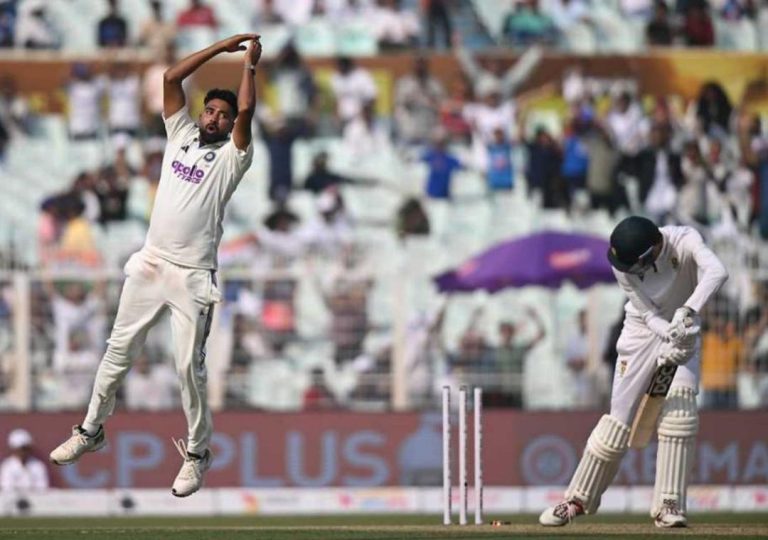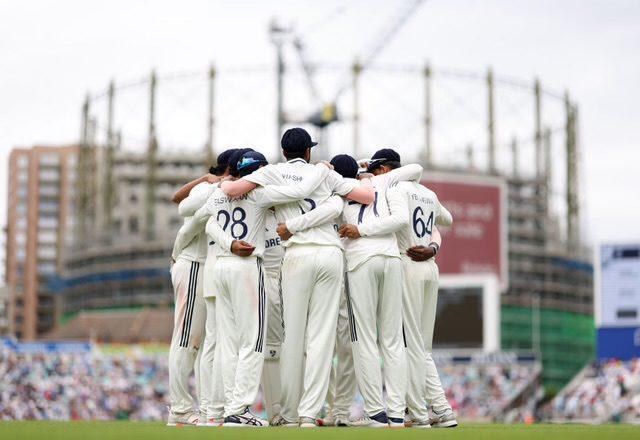
Ravindra Jadeja Compares Captaincy in T20 & Test Format: A Glimpse into the Minds of Leaders
Ravindra Jadeja, the Indian cricketer, has been making headlines lately with his impressive performances on the field. In a recent conversation with R Ashwin, Jadeja opened up about the challenges and differences he faces while leading a team in both T20 and Test formats. His words of wisdom offer a fascinating glimpse into the minds of leaders in the world of cricket.
In Test cricket, Jadeja believes, captaincy is a more calculative and simple process. He emphasized the importance of adjusting field placements to suit the needs of the bowlers. “In Test cricket, you have to change two-three fielders as per the need of the bowler. Captaincy in Test cricket is different. It’s simple, but calculative. It’s not complicated like IPL or T20Is,” Jadeja said.
This statement highlights the unique demands of Test cricket, where teams need to be patient and strategic in their approach. A Test match can last for five days, giving teams ample time to adapt and adjust their plans. In contrast, T20 cricket is a high-intensity, high-stakes format that requires quick decision-making and adaptability.
Jadeja’s comment about field adjustments in Test cricket is particularly insightful. A good captain knows how to read the game and make tactical decisions that can swing the momentum in their team’s favor. By adjusting field placements, a captain can create opportunities for their bowlers to pick up wickets or restrict the opposition’s scoring. This level of attention to detail is crucial in Test cricket, where a small mistake can prove costly.
In T20 cricket, Jadeja believes, every ball is an event. This high-pressure format demands a different approach to captaincy, where quick decisions and adaptability are essential. “In T20s, every ball is an event,” he said. “You have to be on your toes, and every ball can change the game.” This statement underscores the frenetic pace of T20 cricket, where a team’s fortunes can change rapidly.
In T20 cricket, captains need to be able to think on their feet and make decisions quickly. A misfielded ball or a bad delivery can prove costly, and a captain needs to be able to adjust their strategy accordingly. Jadeja’s comment about every ball being an event highlights the intense pressure and unpredictability of T20 cricket.
Jadeja’s words also offer a glimpse into the mental demands of captaincy in both formats. In Test cricket, captains need to be able to manage their emotions and stay focused over a longer period. In T20 cricket, the pressure is intense, and captains need to be able to stay calm and composed under pressure.
The differences between captaincy in T20 and Test cricket are a reflection of the unique demands of each format. Test cricket is a more strategic and tactical game, where teams need to be patient and calculated in their approach. T20 cricket, on the other hand, is a high-intensity, high-stakes format that demands quick decision-making and adaptability.
Jadeja’s comments also offer a glimpse into the mind of a leader in cricket. A good captain needs to be able to read the game, make tactical decisions, and stay focused under pressure. Whether in Test cricket or T20 cricket, a captain’s ability to adapt and adjust is crucial to their team’s success.
In conclusion, Ravindra Jadeja’s words offer a fascinating glimpse into the challenges and differences he faces while leading a team in both T20 and Test formats. His comments highlight the unique demands of each format and the importance of adaptability and strategic thinking in captaincy. As cricketers continue to navigate the complexities of modern cricket, Jadeja’s words offer valuable insights into the mind of a leader in the game.






